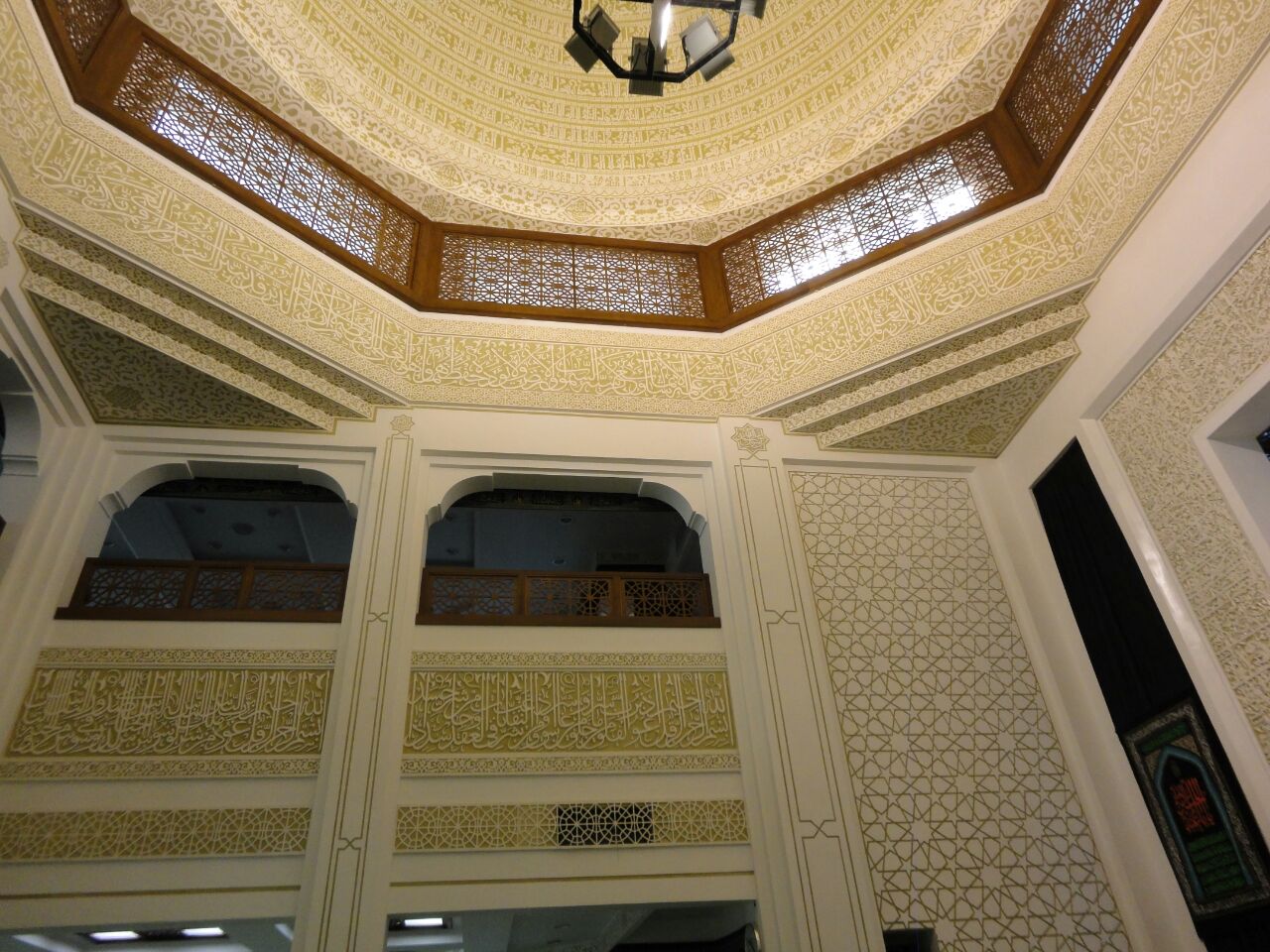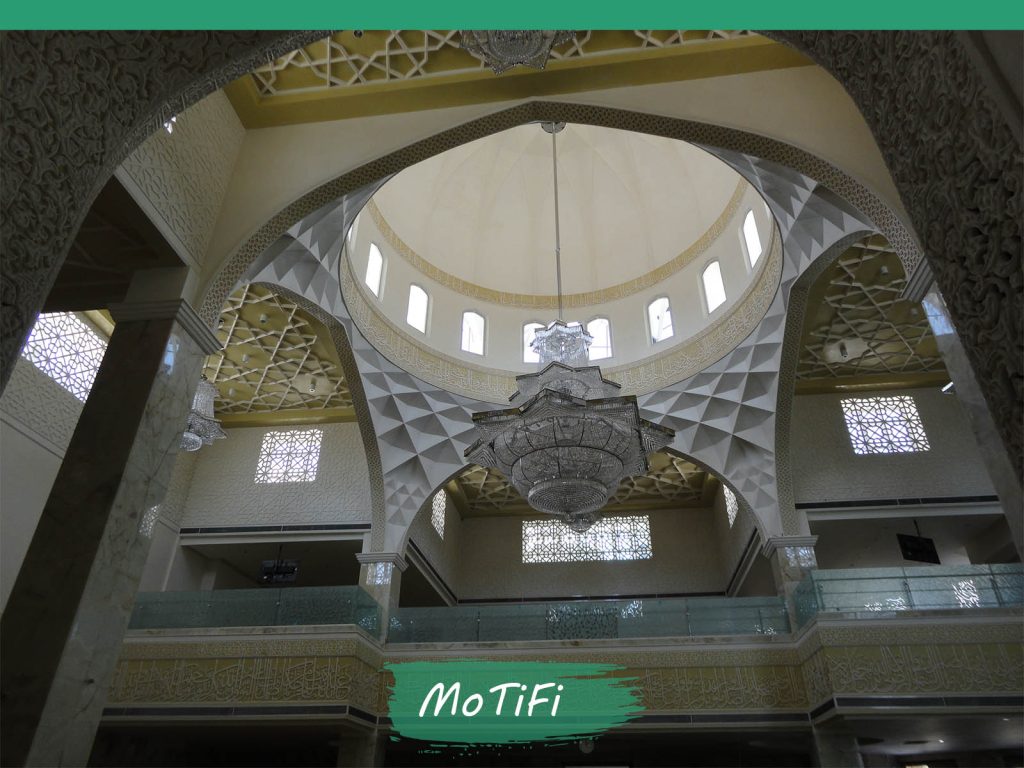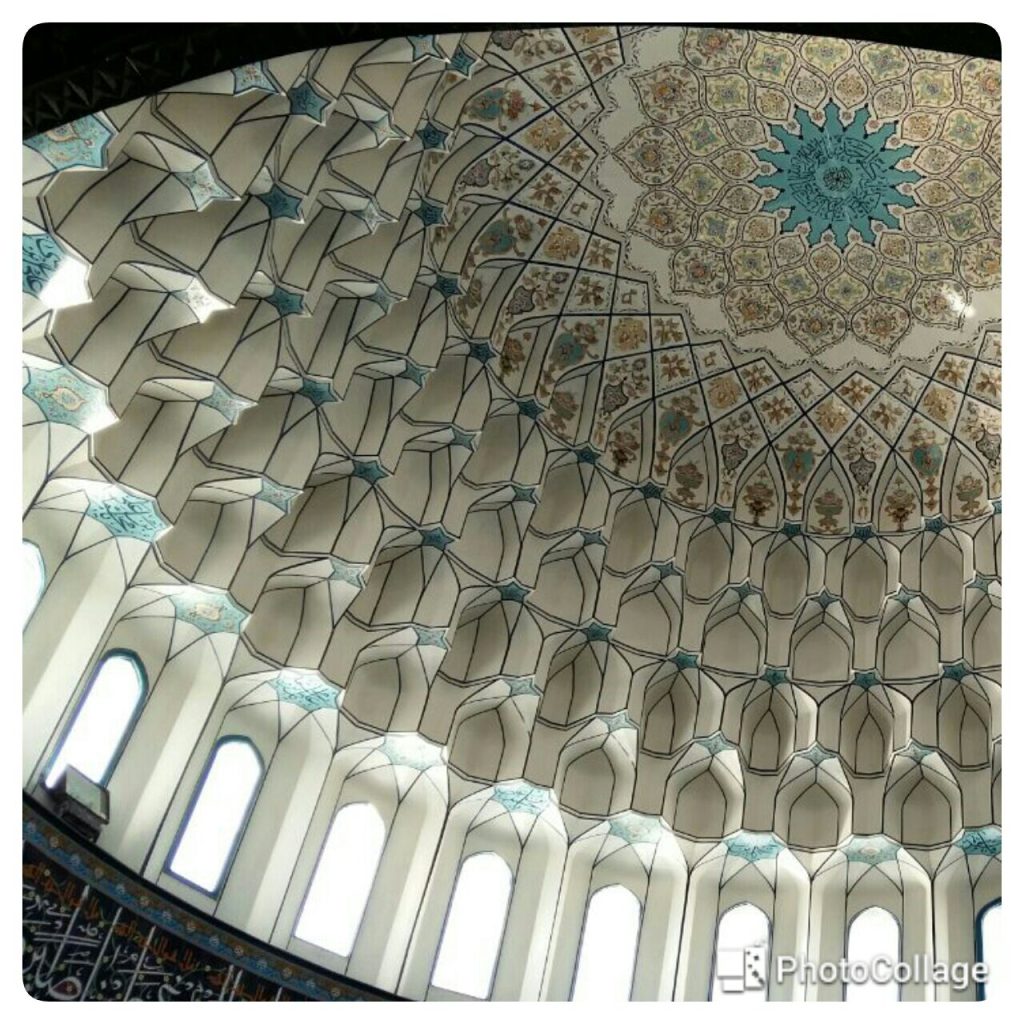
As the center of spirituality in Islam, the mosque has an important position in the lives of Muslims. The interior design of mosques should not only respond to the religious and spiritual needs of people, but also emphasize the values of aesthetics and art. The goal of Mr Motifi Fard as as a master worker in working in religious spaces, is to provide solutions and tips that help improve the attractiveness and quality of religious spaces in mosque design.
Islamic architecture and mosque design

The history of plastering and plastering mosque design
Some of the works obtained from the excavations of ancient Iran show that the use of gypsum was widespread in Syria and Anatolia 9000 years ago. It has also been proven that the Greek, Roman, Egyptian, Assyrian and Sumerian civilizations also used this mineral as building materials. In Iran, most of the existing plaster works date back to the Sassanid era before Islam. After the arrival of Islam in Iran, the art of plastering has made many improvements. So that the effects of this development and progress can be seen in the plastering of mosques and altars.
- sanctuary of Nain Mosque
- sanctuary of Hamadan Alavian mosque
- sanctuary of Jame Mosque of Saveh
- tomp of Sheikh Ahmad Jami in Torbat Jam
- Kolah Ferangi mansion in Shiraz
- Golestan Palace in Tehran and Aali Qapu palace in Isfahan
Islamic architecture and mosque design
In the interior design of the mosque, various factors such as lighting, relaxation, artistic decorations and layout of spaces play an important role. Islamic architecture, as an ancient and different art, has patterns and rules that are used in mosque design. These rules include the use of geometric shapes and patterns, The place where people are called to pray, , shrine and its privacy, bricks and stones, etc. The interior design of the mosque should express beauty and purity in religious spaces according to these criteria.
Lighting and its effect on the interior mosque design
Lighting in mosque interior design is one of the important factors that affect the quality and attractiveness of religious spaces. The proper use of light inside the mosque gives a sense of spirituality and peace to the spaces and Attracts people for prayer and concentration. In the interior design of the mosque, we must pay special attention to lighting and use appropriate methods for using natural and artificial light in religious spaces.
The difference between plastering and Plaster decoration in the interior mosque design
The importance of mosque design
The importance of mosque design plays a very important role in creating beautiful and sublime spaces for worship. This art creates a deep connection between Muslims and God by using Islamic artistic symbols and patterns. As one of the important elements in Islamic architecture, stucco design has a significant effect on the space and The main elements of the mosque.

Plastering techniques and models in mosque design
ARABESQUE
One of the well-known techniques in stucco design is the use of Arabesque. Arabesque is a set of geometric patterns and symbols that are intertwined in the form of circles, bends and complex threads. These patterns think of a certain proportion and balance between the different components of the mosque and affect the beauty and harmony of the space.
line drawing and Artistic details
In stucco design, accurate line drawing and the use of artistic details play a very important role. Thin lines and detailed decorations on plastered surfaces give it an amazing effect and affect the overall beauty of the design. These artistic details, using Arabic letters, Quranic verses and spiritual symbols in Islam, add charm and depth to the design.
pottery
Pottery is also used as one of the techniques related to stucco mosque design. Pottery means using clay and bricks to beautify the building. Clay surfaces together with stucco give an exceptional appearance to mosques and strengthen the harmony between text and stucco designs.
The use of stucco in the mosque design in Iranian mosques
Iranian mosques, as outstanding examples of Islamic art, use stucco design a lot. In these mosques, stucco designs using arabesque, Shah Abbasi motifs and national designs are used as beautiful elements in the interior and exterior spaces of the building.
Plaster mosque design in the mosques of the world
The art of stucco mosque design has grown and developed not only in Iran but all over the world. From Azmoniyeh mosques in Egypt to great mosques in India and from famous buildings in the West to modern mosques in Western countries, stucco design has a great value as one of the elements of Islamic architecture.
The effect of stucco design on the atmosphere of the mosque
Plaster design directly affects the atmosphere of the mosque. By using patterns and artistic symbols, the atmosphere of the mosque becomes beautiful and relaxing. With its density and variety, stucco works strengthen the feeling of connection between people and place and provide a different and exceptional environment for worship.
Maintenance and preservation of stucco design
In order to preserve and maintain the stucco design in mosques, it is necessary to use appropriate methods. Regular cleaning and maintenance of plaster surfaces prevents the loss of artistic details and its beauty. Also, the use of high quality materials for the construction of the building and the use of methods of preservation and protection of stucco will help the longevity of the designs.
Revising in plaster design: new approaches
With the advancement of technology and the development of new methods in the construction and mosque design, new approaches are also used in plastering design. The use of modern methods in the production and installation of stucco designs allows designers to implement larger, more complicated and more detailed designs.
The interior mosque design is a reflection of Islamic art and beauty, which has been used throughout history as a unique art by Mr. Akbar Motifi Fard in holly buildings. By using the various techniques and stucco designs, mosques as centers for worship and spiritual concentration gain a special shine and charm.
For more information and access to more content, you can refer to the link below. If you want to see the executed images and the various works of Mr. Matifi Fard, please refer to the gallery.
